
Such rhetoric, intended for a gullible public, can deepen suspicions with regard to the motives that both India and Pakistan accuse each other of nurturing. More importantly, such unnecessary exchanges of barbs makes the task of any gradual rapprochement leading to a broad reconciliation more difficult, if not impossible — especially at a time when both countries are ruled by leaders who are down to earth and pragmatic in their approach towards improving relations. How tragic that both countries continue to be hamstrung, and indeed held hostages, to the non-resolution of the Kashmir dispute and a couple of other issues, for nearly seven decades and that their trade and commercial relations remain frozen in time. The cost of this conflict to the impoverished teeming billions in both countries is incalculable.
Indian Prime Minister Narendra Modi, on the commencement of the holy month of Ramazan, called his Pakistani counterpart to offer his felicitations. That was a great gesture from Mr Modi at a time when it was needed the most and bore the hallmarks of a true leader and a great politician. Hopefully, this small initiative would lead to some form of renewed contact between the leaders of the two countries, as is expected to happen on the sidelines of a summit in Russia this week. The fact remains that India and Pakistan need to put into place institutional mechanisms that are activated whenever there is a danger of the trouble spilling over and mutual recriminations assuming dangerous proportions. Regrettably, track-two initiatives have not created any considerable impact as far as a reappraisal of policies is concerned. Neither New Delhi nor Islamabad has shown any inclination to factor in the vast array of recommendations formulated by many think tanks, after long deliberations, into their policies.

While the impasse in South Asia persists, the world has moved on. Trade between China and India, despite the many troubling issues confronting both countries, has gone up considerably over recent years. At the same time, East Asian economies are preparing to benefit from the huge investments made by the US and China. Russia and China are coming closer together in a new, robust partnership that some feel may mark the beginning of a new cold war.
On the other hand, pacts and agreements connecting the countries of South Asia remain dormant because the ice just refuses to melt as far as India-Pakistan relations are concerned. Saarc and many other regional forums have been of very limited benefit to the countries of the region, primarily because of the continuing stalemate in relations between India and Pakistan. Politicians in both countries have not only failed to create an environment for better understanding, but also have not created any awareness on the quantum and extent of damage that strained relations have caused to the peoples of the two countries that comprise about one-fifth of humanity.
The huge problems confronting both India and Pakistan are by and large overlooked as both aggressively pursue a confrontational policy in utter disregard of the compelling objective realities that need to be addressed. There is the monumental challenge of alleviation of poverty. More than 400 million Indians live below the poverty line; more than 50 million share that fate in Pakistan. More than seven million Pakistani children don’t go to schools. Millions of people in both countries are deprived of basic sanitation, electricity and access to piped water. India has 60 million chronically malnourished children — 40 per cent of the world’s total. It also has 143 million poor households. Around 61 per cent Pakistanis live on less than $2 a day and 40 per cent of the population has no access to clean drinking water.
While South Asia is home to about half of the world’s poor, both India and Pakistan are spending an awful lot of precious resources on building up and augmenting defence capabilities. This arms race, consuming billions of dollars each year, is wholly incompatible with the dreams and aspirations of the billions of people in both countries, who are impoverished, marginalised and who live in multi-dimensional poverty. When would there be an end to this stalemate and when would the ice begin to melt? Would this situation last in perpetuity — to the dismay of the ordinary citizens of both countries?
As they fail to grasp opportunities and initiate a constructive dialogue aimed at reducing tensions, both countries must prepare for bigger challenges. Both are on course to becoming water-stressed in a span of just a few years. Some experts believe that the threshold might have already arrived. Underground aquifers are fast depleting in both countries. According to latest findings, India and Pakistan are on the brink of a severe drought that will affect humans, livestock, ecology and industry, and would pose serious health hazards. Income inequalities, carbon emissions (India is the world’s fourth largest emitter of carbon), people migrating to urban centres, deteriorating infrastructure and lack of job opportunities are serious issues that would be confronting people and policymakers in the near future — issues that could generate tensions, causing social upheavals in the subcontinent.
It is time leaders in both countries shed their paranoia and engaged in a frank and candid dialogue that not only factors in ground realities, but also focuses on establishing a broad understanding as far as convergence of policies on critical issues the two countries will face in the years to come are concerned. How unfortunate is it that bilateral trade in a region of 1.45 billion people is only around $2.5-$3 billion? How disappointing that there are only three flights a week between Lahore and New Delhi to serve the needs of 1.45 billion people?
This must change. People in both countries need jobs, quality education, better health care, a clean environment, economic advancement, water, electricity, gas, job opportunities, cultural contacts, increased trade, more people-to-people contact — and less hostility, fewer tensions and an elimination of enmities.
Published in The Express Tribune, July 7th, 2015.
Like Opinion & Editorial on Facebook, follow @ETOpEd on Twitter to receive all updates on all our daily pieces.













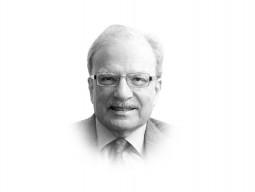


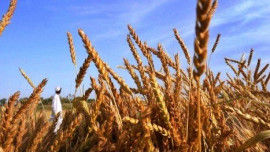












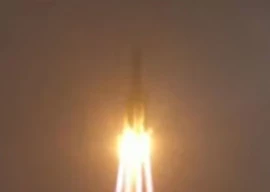
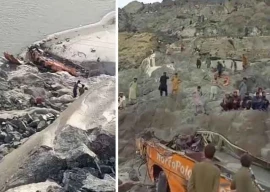
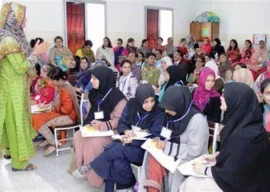








COMMENTS (25)
Comments are moderated and generally will be posted if they are on-topic and not abusive.
For more information, please see our Comments FAQ